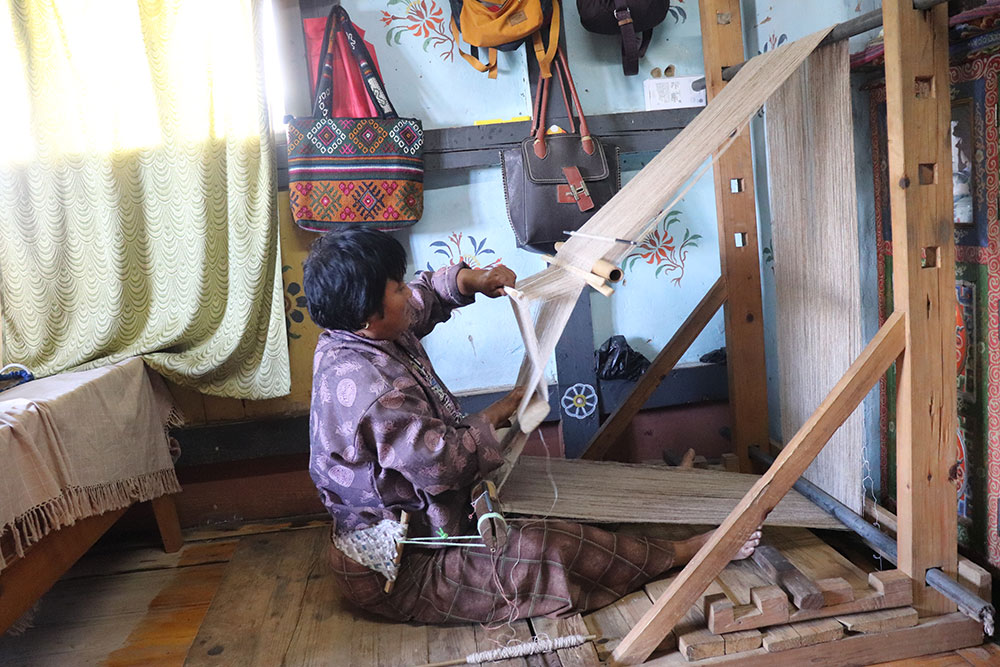Nim Dorji | Trongsa
Like many businesses, the pandemic impacted women who make a living weaving fabric from nettle yarn in Trongsa.
Tsuendru Choden from Bayling village of Langthel gewog has been weaving nettle fabric for the last two decades. As the pandemic impacted her, many of her products at Tarayana could not be sold and some are at home.
“With no business and income from weaving, I made a group and started growing vegetable in an acre land,” she said.
She weaves different fabrics such as bed covers, table covers, cushion covers, and bags embroidered with indigenous designs.
The products were sold during trade fairs.
Tsuendru Choden said they also got orders to weave gifts for officials going outside and high-end hotels like Amankora before. “After the pandemic started, we did not get any orders.”
The 58-year old woman said many people weave from other yarns that are imported and easily available, but there are only a few who weave from nettle.
She said that while weaving from nettle yarn, spinning takes time. “Whenever we get free time in the morning and evening, we spend time spinning. It only takes two to three days to weave.”
Tsuendru Choden and 31 women from Bayling were trained to weave fabrics from nettle yarn in 2005 by Tarayana Foundation.
Now only 13 women weave from nettle yarn. Some of the group members died while some left the village.
Bayling is only the village in Trongsa weaving from nettle yarn.
Another weaver, Chimmi, said that the most challenging in weaving from nettle yarn is to collect nettle plant. “The plant is not available near our village. We have to walk almost a day’s journey. We have to walk till the base of the Black Mountain to collect nettle plant.”
Women said once they find the plant, they peel the nettle cover, bring it home, and cook it. “We then dry it, again wash and clean, and then spin into thread, colour it and weave,” Chimmi said. “Almost six kilogrammes of yarn is needed to weave a gho.”
The nettle is collected in the 9th and 10th months of the Bhutanese calendar.
Meanwhile, people are worried that the art may disappear in the future as not many young women show interest in the art of weaving from nettle yarn.
Edited by Tashi Dema


